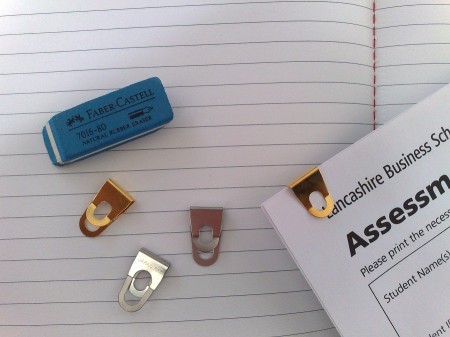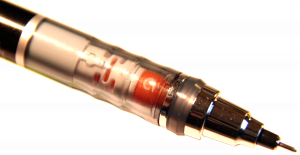OHTO Super Clip

Last time I was in Germany I discovered a second hand book shop in Würzburg that also displayed stationery in the shop windows. The stationery on display seemed to be a mix of items I have seen in Lexikaliker’s blog and in Manufactum’s catalogue, but there were also a few items I have not seen anywhere else.

Items I saw there for the first time included paper and envelopes from Zerkall Ingres, mouldmade in a paper mill dating to the 16th century, and cotton/linen paper from Artesanos del Papel in Alicante.
One of the items I bought in this book shop is a paper clip from OHTO, a paper clip looking a bit like a picture frame hanger. The informal name seems to be Japan-Clip. It can hold 20 sheets of 80g paper. The standard clip is nickel-plated, selling for 20c each (25¢, 16p), the posh version for 50c (63¢, 41p ) is 18K gold-plated.

The nice thing about these clips is that they still look good even if they hold many sheets of paper, while ordinary paper clips usually look unsightly if you squeeze too many sheets of paper in. On the other hand ordinary paper clips can hold more sheets of paper and seem to be softer to the paper. When you try to squeeze too many sheets of paper (> 25) into the Super Clip it can damage the paper slightly when you remove the paper clip again.

After using OHTO’s Super Clips for a while I came to appreciate them as re-usable, temporary clips that hold paper together much better and tighter than ordinary paper clips. The fact that I have two different colours helps to distinguish similarly documents I am working with, e.g. two sets of statistics from different years.
Links:
I found this company selling Zerkall Ingres paper in the USA.
JetPens and Cult Pens do not seem this paper clip and I could not find an American or British online shop selling the Japanese paper clip. RSVP and Modulor are two German online shops that have the paper clip in stock and ship to most countries.
Prices and exchange rates: August 2010
I would like to thank Kent and Arnie for the Banditapple carnets used in the photos.









